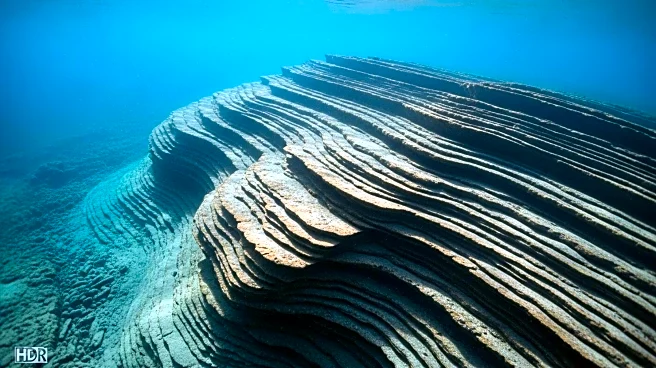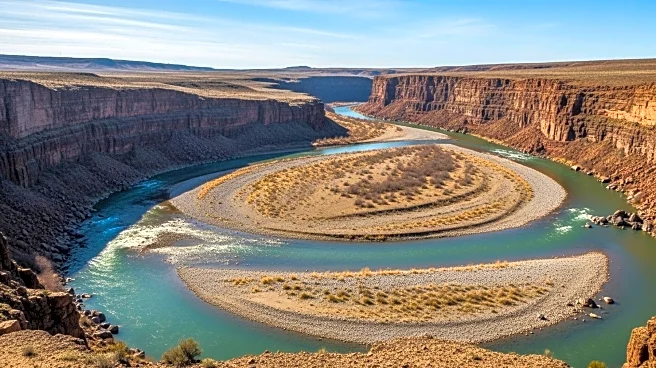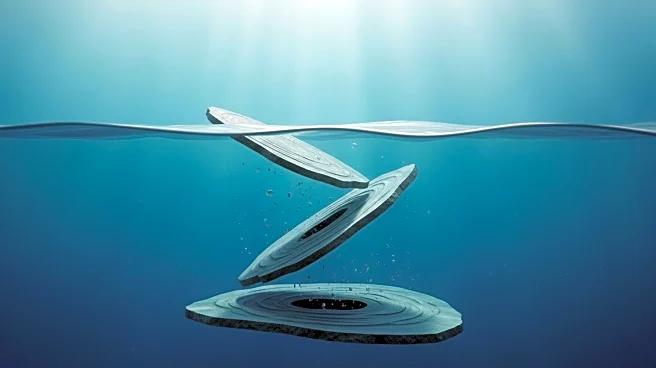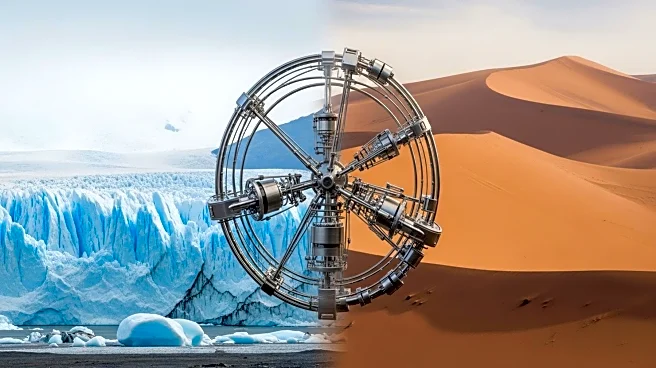What's Happening?
Scientists from the University of Manchester and Aker BP in Norway have discovered large sections of the North Sea seafloor that appear to be flipped upside down. This unusual geological phenomenon, identified using seismic imaging techniques, reveals dense sand layers positioned beneath lighter sediment, contradicting traditional geological principles where older layers lie beneath younger ones. The research highlights a process called stratigraphic inversion, leading to the formation of structures known as sinkites, where denser sand has sunk into lighter sediments, effectively flipping the conventional layers. The discovery suggests that seismic activity may have caused sediment collapse approximately 5.3 million years ago, reshaping the seafloor as it exists today.
Why It's Important?
This discovery has significant implications for understanding sediment movement and subsurface stability, which are crucial for assessing underground reservoirs, sealing, and fluid migration. These factors are vital for carbon capture and storage, impacting climate-related engineering projects. The findings challenge existing geological models and could inform future studies on carbon storage, hydrocarbon reservoirs, and the integrity of geological seals. The research adds to evidence that the seafloor is more dynamic than previously thought, especially in regions where sediment density, fluid content, and tectonic stresses interact in complex ways.
What's Next?
The scientific community has shown mixed reactions to the discovery, with some skepticism and support for the new model. Further research is needed to validate the model and determine its applicability to other regions. If confirmed, the model could significantly influence future geological studies and engineering projects related to climate change mitigation. Researchers will likely continue to explore the implications of these findings on subsurface fluid dynamics and sediment movement.
Beyond the Headlines
The discovery of upside-down seafloor layers could lead to a reevaluation of geological processes and sediment dynamics. It highlights the complexity of subsurface interactions and the potential for unexpected geological formations. This could have long-term implications for industries reliant on subsurface stability, such as oil and gas exploration and carbon storage initiatives. The research underscores the importance of advanced seismic imaging techniques in uncovering hidden geological structures.












